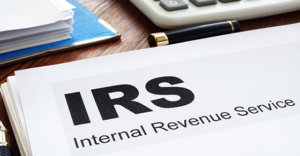Final Regs on Exclusion from GILTI of Income Subject to High Foreign Tax Rate
 This article applies to taxpayers that may have an interest that creates ownership of a Controlled Foreign Corporation. The new GILTI tax is discussed as well as an exclusion from the tax for non-US corporation that operates in high tax jurisdictions and thus may not be subject to the GILTI tax based on a new high-tax exclusion.
This article applies to taxpayers that may have an interest that creates ownership of a Controlled Foreign Corporation. The new GILTI tax is discussed as well as an exclusion from the tax for non-US corporation that operates in high tax jurisdictions and thus may not be subject to the GILTI tax based on a new high-tax exclusion.
Abstract: The IRS recently issued final regs under Internal Revenue Code Section 951A, including global intangible low-taxed income (GILTI) provisions regarding the treatment of income subject to a high rate of foreign tax. This article reviews the 2019 proposed regs and covers highlights of the final regs.
—
The IRS recently issued final regs under Internal Revenue Code Section 951A, which include global intangible low-taxed income (GILTI) provisions regarding the treatment of income subject to a high rate of foreign tax.
The IRS has also issued proposed regs, issued contemporaneously with the final regs, that propose to generally conform the rules implementing the Sec. 954(b)(4) subpart F high-tax exception to the rules implementing the GILTI high-tax exclusion. In addition, the proposed regs provide for a single election under Sec. 954(b)(4) for purposes of both subpart F income and tested income.
2019 Proposed Regs
Sec. 951A, enacted as part of the Tax Cuts and Jobs Act, requires a U.S. shareholder of a controlled foreign corporation (CFC) to include in gross income the shareholder’s GILTI inclusion for a tax year. The determination of a U.S. shareholder’s GILTI inclusion begins with the calculation of “tested items” of each CFC owned by the shareholder. These include tested income, tested loss and qualified business asset investment.
In 2019, the IRS issued proposed regs that provided an election to exclude the following from gross tested income: gross income subject to foreign income tax at an effective rate that’s greater than 90% of the rate that would apply if the income were subject to the U.S. maximum tax rate. (This is the GILTI high-tax exclusion.)
The CFC’s controlling domestic shareholders could make the election for the CFC by attaching a statement to an original or amended tax return for the inclusion year. The election would be revocable but, once revoked, a new election generally couldn’t be made for any CFC inclusion year that begins within 60 months after the close of the CFC inclusion year for which the election was revoked. (This is referred to as the “60-month restriction.”)
The 2019 proposed regs applied based on the effective foreign tax rate imposed on the aggregate of items of tentative net tested income of a CFC attributable to a single qualified business unit (QBU) of the CFC that would be in a single tested income group. Furthermore, the regs applied on a QBU-by-QBU basis to minimize the “blending” of income subject to different foreign tax rates, as well as to more accurately identify income subject to a high rate of foreign tax such that low-taxed income continued to be subject to the GILTI regime in a manner consistent with its underlying policies.
Last, the 2019 proposed regs contained proposed rules under Sec. 951, Sec. 956, Sec. 958 and Sec. 1502 for determining stock ownership and GILTI for partners of domestic partnerships that are U.S. shareholders of a CFC.
Final Regs
The final regs retain the basic approach and structure of the 2019 proposed regs. However, while these final regs finalize the portion of the 2019 proposed regs under Sec. 951A and Sec. 954 regarding the treatment of income subject to a high rate of foreign tax, they don’t finalize the portions of the 2019 proposed regs under Sec. 951, Sec. 956, Sec. 958 and Sec. 1502 regarding the treatment of domestic partnerships. The IRS plans to finalize those regs separately.
Also, the final regs don’t include the 60-month restriction. Generally, taxpayers may elect the GILTI high-tax exclusion on an annual basis. Therefore, if an entity revoked a GILTI high-tax exclusion election for one year, it can elect the GILTI high-tax exclusion the following year.
Furthermore, the final regs replace the QBU-by-QBU approach in the 2019 proposed regs with a more targeted approach based on “tested units” and permit some additional blending of income under the “tested unit combination rule.”
Applicability Dates
The final regs are consistent with the applicability date in the 2019 proposed regs. Thus, they provide that the GILTI high-tax exclusion applies to:
- Taxable years of foreign corporations beginning on or after July 23, 2020, and
- Tax years of U.S. shareholders in which or with which such taxable years of foreign corporations end.
In addition, the final regs permit taxpayers to choose to apply the GILTI high-tax exclusion to:
- Taxable years of foreign corporations that begin after December 31, 2017, and before July 23, 2020, and
- Tax years of U.S. shareholders in which or with which such taxable years of the foreign corporations end.
Any taxpayer that applies the GILTI high-tax exclusion retroactively must consistently apply the final regs to each taxable year in which the taxpayer applies the GILTI high-tax exclusion.
More Details
These are just a few of the notable details regarding the final regs. Consult us for more information and any questions you might have.
Interested in receiving these blogs directly to your inbox? Signup for our newsletter and international tax blogs here!
